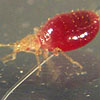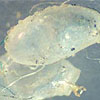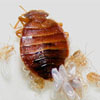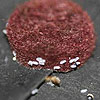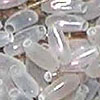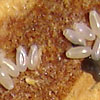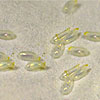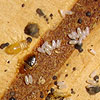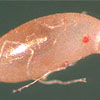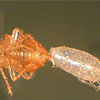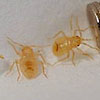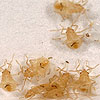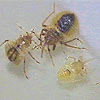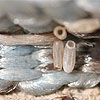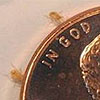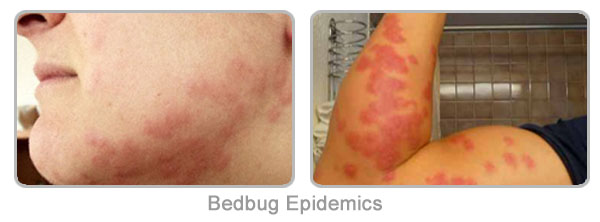Categories
- Bed Bug
- Bed Bug Cream
- BED BUG DATABASE
- Bed Bug Home Remedies
- Bed Bug Oil
- Bed Bug Remedies
- Bed Bug Spray
- Bed Bugs New York
- Bed Bugs Vancouver
- Bed Bugs World
- Bed Bugs American Samoa
- Bed Bugs Canada
- Bed Bugs Guam
- Bed Bugs North Mariana islands
- Bed Bugs Puerto Rico
- Bed Bugs United States
- Bed Bugs Alabama
- Bed Bugs Alaska
- Bed Bugs Arizona
- Bed Bugs Arkansas
- Bed Bugs California
- Bed Bugs Colorado
- Bed Bugs Connecticut
- Bed Bugs Delaware
- Bed Bugs Florida
- Bed Bugs Georgia
- Bed Bugs Hawaii
- Bed Bugs Idaho
- Bed Bugs Illinois
- Bed Bugs Indiana
- Bed Bugs Iowa
- Bed Bugs Kansas
- Bed Bugs Kentucky
- Bed Bugs Louisiana
- Bed Bugs Maine
- Bed Bugs Maryland
- Bed Bugs Massachusetts
- Bed Bugs Michigan
- Bed Bugs Minnesota
- Bed Bugs Mississippi
- Bed Bugs Missouri
- Bed Bugs Montana
- Bed Bugs Nebraska
- Bed Bugs Nevada
- Bed Bugs New Hampshire
- Bed Bugs New Jersey
- Bed Bugs New Mexico
- Bed Bugs New York
- Bed Bugs North Carolina
- Bed Bugs North Dakota
- Bed Bugs Ohio
- Bed Bugs Oklahoma
- Bed Bugs Oregon
- Bed Bugs Pennsylvania
- Bed Bugs Rhode Island
- Bed Bugs South Carolina
- Bed Bugs South Dakota
- Bed Bugs Tennessee
- Bed Bugs Texas
- Bed Bugs Utah
- Bed Bugs Vermont
- Bed Bugs Virgin Islands
- Bed Bugs Virginia
- Bed Bugs Washington
- Bed Bugs Washington DC
- Bed Bugs West Virginia
- Bed Bugs Wisconsin
- Bed Bugs Wyoming
- BedBug Removal
- BedBugs in Michigan
- Canada Bed Bugs
- Do it yourself Bed Bug
- Exterminator Bed Bugs
- Health
- Pest Inspection
- Toronto Bed Bugs
- Welcome to Bed Bugs
Registry Sites List
- Bronx Bed Bug Registry Infestation Maps, Residential And Hotel
- Brooklyn Bed Bug Registry Infestation Maps, Residential And Hotel
- Manhattan Bed Bug Registry Infestation Maps, Residential And Hotel
- Nyc Bed Bug Registry Infestation Maps, Residential And Hotel
- Queens Bed Bug Registry Infestation Maps, Residential And Hotel
- Staten Island Bed Bug Registry Infestation Maps, Residential And Hotel
Recommended Sites
Category Archives: BED BUG DATABASE
News Links:
Bed Bug Eggs and Nymphs
Bed Bug Eggs
 The transmission of bed bug eggs is also an issue. It is not uncommon for the live bedbugs amongst an infestation to be completely eradicated during an effective treatment cycle only to have the remaining or surviving eggs hatch and re infest the location. The bed bug eggs themselves are usually unaffected by and/or not killed by most approved pesticides. The eggs can also have an incubation period of up to several weeks and may be deposited in hidden areas that are difficult to penetrate, difficult to find, or simply hidden away from what otherwise would have been a quick lethal treatment (i.e. lethal treatment such as the killing of a bed bug's eggs through heat'”by hot ironing fabric surfaces where bed bugs have hidden, through steaming [typically using a fabric steamer], via direct machine drying, or through a procedural use of boiling water, etc.).
The transmission of bed bug eggs is also an issue. It is not uncommon for the live bedbugs amongst an infestation to be completely eradicated during an effective treatment cycle only to have the remaining or surviving eggs hatch and re infest the location. The bed bug eggs themselves are usually unaffected by and/or not killed by most approved pesticides. The eggs can also have an incubation period of up to several weeks and may be deposited in hidden areas that are difficult to penetrate, difficult to find, or simply hidden away from what otherwise would have been a quick lethal treatment (i.e. lethal treatment such as the killing of a bed bug's eggs through heat'”by hot ironing fabric surfaces where bed bugs have hidden, through steaming [typically using a fabric steamer], via direct machine drying, or through a procedural use of boiling water, etc.).
 This stubborn tendency of bed bug infestations towards re-emergence can be incredibly problematic and made all the more difficult to detect due to a now smaller size of the newly re-emerged bed bug nymphs. Re infestation can also be made more difficult to discover early enough due to a corresponding decrease in the 'size' of infestation symptoms'”such as fewer and now much smaller fecal droppings that may be scattered in between and more difficult to detect (droppings that may then be found resembling lone, tiny pinhead-sized dabs from a black permanent-marker). As well as other 'smaller' infestation symptoms such newer sloughed off skins that tinier in size and the potential for hiding locations that are more narrow and thus harder to find during re infestation, etc. The result of a recurrent bed bug infestation can prove dispiriting, disheartening, demoralizing, and even depressing to households that may have already gone great lengths (in expense, labor, treatment, containment measures, lost furniture, etc.) to try and contain an infestation. Fortunately, more effective (as well as cost-effective) approaches towards successful treatment can come with experience.
This stubborn tendency of bed bug infestations towards re-emergence can be incredibly problematic and made all the more difficult to detect due to a now smaller size of the newly re-emerged bed bug nymphs. Re infestation can also be made more difficult to discover early enough due to a corresponding decrease in the 'size' of infestation symptoms'”such as fewer and now much smaller fecal droppings that may be scattered in between and more difficult to detect (droppings that may then be found resembling lone, tiny pinhead-sized dabs from a black permanent-marker). As well as other 'smaller' infestation symptoms such newer sloughed off skins that tinier in size and the potential for hiding locations that are more narrow and thus harder to find during re infestation, etc. The result of a recurrent bed bug infestation can prove dispiriting, disheartening, demoralizing, and even depressing to households that may have already gone great lengths (in expense, labor, treatment, containment measures, lost furniture, etc.) to try and contain an infestation. Fortunately, more effective (as well as cost-effective) approaches towards successful treatment can come with experience.
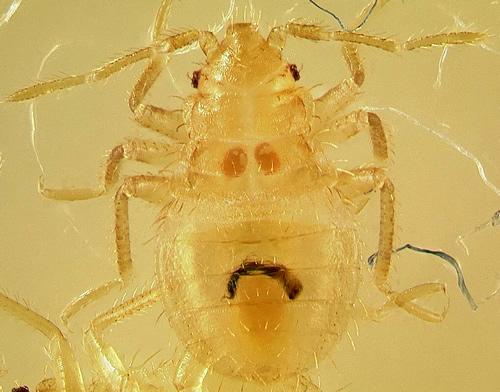 General machine washing and drying on high heat will disinfect most clothing of potential bed bugs and will kill their eggs as well. In the 18th century,turpentinewas used in combination withhenna(Lawsonia inermis, aka camphire) flowers and alcohol, as an insecticide that also reputedly killed bed bug eggs. The use of a fabric steamer on the infestations will kill the eggs and the bugs instantly. The bed bugs cannot handle the intense heat and are killed in a couple of seconds. Since steam will penetrate the pores of a mattress, it can reach deep into the corners of beds.
General machine washing and drying on high heat will disinfect most clothing of potential bed bugs and will kill their eggs as well. In the 18th century,turpentinewas used in combination withhenna(Lawsonia inermis, aka camphire) flowers and alcohol, as an insecticide that also reputedly killed bed bug eggs. The use of a fabric steamer on the infestations will kill the eggs and the bugs instantly. The bed bugs cannot handle the intense heat and are killed in a couple of seconds. Since steam will penetrate the pores of a mattress, it can reach deep into the corners of beds.
Adult bed bugs, the nymphs, or their eggs may also follow home movers into their new homesite infesting the new location as well'”often following movers who were, in fact, moving out due to an unmanaged infestation.
An immature bed bug may take several months to mature to an adult and an adult bed bug can live for up to one year. During development, the young bed bug will feed frequently on the blood of humans, and can exist for many months between blood meals. Bed bugs inject saliva into the blood stream of their host to thin the blood, and to prevent coagulation. It is this saliva that causes the intense itching and welts. The delay in the onset of itching gives the feeding bed bug time to escape into cracks and crevices. In some cases, the itchy bites can develop into painful welts that last sever
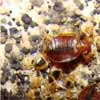 Yet another perceived cause of the bed bug resurgence is the growing push to recycle mattresses. Not only are mattresses to be recycled, collected, and stored with those already processed, but it is very difficult to ensure that no bed bugs or eggs survive the processing. In the 18th century,turpentinewas used in combination withhenna(Lawsonia inermis, aka camphire) flowers and alcohol, as an insecticide that also reputedly killed bed bug eggs. Use of steam or by sprayingrubbing alcoholon any visible insects is done to effectively rid bed frames of adult bed bugs and eggs, although it does not serve as a permanent treatment.
Yet another perceived cause of the bed bug resurgence is the growing push to recycle mattresses. Not only are mattresses to be recycled, collected, and stored with those already processed, but it is very difficult to ensure that no bed bugs or eggs survive the processing. In the 18th century,turpentinewas used in combination withhenna(Lawsonia inermis, aka camphire) flowers and alcohol, as an insecticide that also reputedly killed bed bug eggs. Use of steam or by sprayingrubbing alcoholon any visible insects is done to effectively rid bed frames of adult bed bugs and eggs, although it does not serve as a permanent treatment.
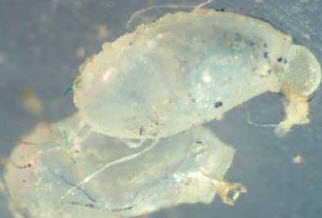 Bedbugs show strong resistance to dessication, able to survive low humidity and a 35'“40°C range even with loss of one-third of body weight; earlier life stages are more susceptible to drying out than later ones.The thermal death point for the common bedbug (C. lectularius) is high: 45°C (113°F), and all stages of life are killed by 7 minutes of exposure to 46°C (115°F). However, in heating buildings, to ensure that no bedbugs survive in cooler locations, theUS Department of Defense recommends using a temperature of at least 49°C (120°F), at 20-30% relative humidity, for at least 20 minutes.
Bedbugs show strong resistance to dessication, able to survive low humidity and a 35'“40°C range even with loss of one-third of body weight; earlier life stages are more susceptible to drying out than later ones.The thermal death point for the common bedbug (C. lectularius) is high: 45°C (113°F), and all stages of life are killed by 7 minutes of exposure to 46°C (115°F). However, in heating buildings, to ensure that no bedbugs survive in cooler locations, theUS Department of Defense recommends using a temperature of at least 49°C (120°F), at 20-30% relative humidity, for at least 20 minutes.
The use of a fabric steamer on the infestations will kill the eggs and the bugs instantly.[citation needed]Since steam will penetrate the pores of a mattress, it can reach deep into the corners of beds.[citation needed]Individual items can be treated with heat. Oven-like devices have been designed specifically for this purpose and are available on the market.[citation needed]Clothing can be sanitized by a 120°F (49°C) laundry dryer.
Enclosing a mattress in a black plastic bag and placing it in the sun on a hot day is not considered effective, because temperatures won't necessarily be high enough everywhere.
 Bed bugs are parasites that feed on the blood of people and certain animals, and they require these blood meals to grow and reproduce. They live close to areas where people typically sleep, rest, or sit for long periods. Hungry bugs will move out from their hiding places, in search of exposed skin. You may also find cast skins, which are empty shells of bugs as they grow from one stage to the next. After a blood meal, bed bugs deposit fecal spots (composed of digested blood) in areas adjacent to the feeding site or back at their hiding places.
Bed bugs are parasites that feed on the blood of people and certain animals, and they require these blood meals to grow and reproduce. They live close to areas where people typically sleep, rest, or sit for long periods. Hungry bugs will move out from their hiding places, in search of exposed skin. You may also find cast skins, which are empty shells of bugs as they grow from one stage to the next. After a blood meal, bed bugs deposit fecal spots (composed of digested blood) in areas adjacent to the feeding site or back at their hiding places.
Getting rid of bed bugs has been a problem documented as early as medieval times in Europe or during the time of Aristotle in Greece. Often attacking when one is fast asleep, bed bugs are smart creatures that choose to move when the target least knows it. Every person will have his own version of a bed bug. The bed bugs will die if they come into contact with the chemicals, but considering their size, it is likely that a few will survive. If one of the survivors is a female -- able to produce hundreds of eggs in here lifespan -- then a newborn tribe of pests will be sucking blood from their sleeping victims in at least one day following conception
Posted in BED BUG DATABASE
Comments Off on Bed Bug Eggs and Nymphs
Bedbug Epidemic
Bed Bug Epidemic
 The bed bug epidemic continues to expand across the United States. The one technology that continues to be viewed by many experts as the best solution for eliminating bed bugs is heat: ThermaPureHeat. On Thursday, 4/29/10 (subject to any breaking news coverage pre-emption) ABC's Nightline will air a segment on bed bugs and treatment options. ThermaPureHeat will be featured as a solution.
The bed bug epidemic continues to expand across the United States. The one technology that continues to be viewed by many experts as the best solution for eliminating bed bugs is heat: ThermaPureHeat. On Thursday, 4/29/10 (subject to any breaking news coverage pre-emption) ABC's Nightline will air a segment on bed bugs and treatment options. ThermaPureHeat will be featured as a solution.
VENTURA, CA '” The bed bug epidemic in North America continues to escalate, as does the national media coverage of the troublesome pests. ABC's Nightline* is scheduled to air a segment on controlling bed bugs this Thursday, April 29. Tiny blood-sucking bedbugs have become an epidemic in New York City. The little pests have invaded even the cleanest and most expensive apartments in neighborhoods around New York. In fact, a councilwoman from the Upper West Side has called for a citywide bedbug task force to address the problem.
The party line is that bed bugs are a "nuisance" but not bad for your health. By this they mean that so far bed bugs have not been found to be a vector for any specific diseases. However, they create havoc in people's lives. Their only food is you, the human host. They mostly attack in the wee hours of the morning while you are asleep and they feed on your blood. Some people do not react to the bites, but most get very itchy welts of various degrees, and some get even worse allergic reactions, even life threatening ones. Insomnia, anxiety, depression, and other stress reactions can also result, so bed bugs,of course, affect and threaten our health. 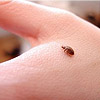 Because these bugs, unlike roaches, for example, do not feed on all kinds of stuff, there is no easy way to kill them with bait type insecticide. They are very hard to get rid of and exterminating them is a very laborous process and a very expensive one. It also entails a pretreatment protocol in which you must clean and bag everything in your home. The cleaning and the throwing away of really infested items makes this nightmare even more expensive.
Because these bugs, unlike roaches, for example, do not feed on all kinds of stuff, there is no easy way to kill them with bait type insecticide. They are very hard to get rid of and exterminating them is a very laborous process and a very expensive one. It also entails a pretreatment protocol in which you must clean and bag everything in your home. The cleaning and the throwing away of really infested items makes this nightmare even more expensive.
You can pick up bed bugs anywhere, fancy hotels, hospitals, etc., or from another apartment if you live in an infested building. Infested buildings are everywhere in every major city. You can get them by bringing in used furniture, so be careful.
This is a political issue and belongs in this forum. People with financial resources can rid themselves easily of this blight, or they can move. People without resources are stuck. Landlords in many cities are mandated to exterminate bed bugs, but they often hire a cheap amateur, and tenants get no relief.
Over the past five years more than 400 articles about the resurgent bedbug scourge sweeping the nation have been published, no more so than in "the capital of bedbug journalism," Manhattan. Today, The Washington Post reported that the "scale of this swarm has been overstated."
 Yes, it's true that bedbugs made an unexpected comeback at the turn of the century after they were all but eradicted by the pesticide DDT in the 1950's. But the man vs. critter appeal of the bedbug narrative has fueled a media frenzy that is difficult to verify with statistics; yet, it's been sending shockwaves through the hospitality sector.
Yes, it's true that bedbugs made an unexpected comeback at the turn of the century after they were all but eradicted by the pesticide DDT in the 1950's. But the man vs. critter appeal of the bedbug narrative has fueled a media frenzy that is difficult to verify with statistics; yet, it's been sending shockwaves through the hospitality sector.
Since few studies have been done on the supposed bedbug revival, news reports rely on hysterical calls to pest controllers--an industry that reaps $6.5 billion annually--perpetuating the fear-mongering even further. The Post quotes entymologists blaming exterminators for telling skittish homeowners they have bedbugs when they don't; cites the new phenomenon of dogs trained to sniff them out; and points to a boom in bedbug litigation, signaling that the media attention may have spurred a veritable industry.
Posted in BED BUG DATABASE
Comments Off on Bedbug Epidemic
Bed Bug Products
Bed Bug Products
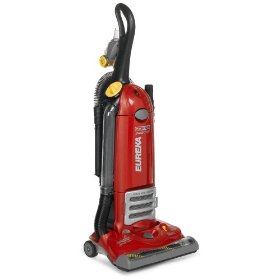
More on Eureka 4870MZ Boss Smart-Vac Upright HEPA Vacuum Cleaner
The BOSS SMART VAC captures dirt other cleaners don't and on more surfaces. This model has an Eureka patented SEALED HEPA system . A system that filters all the fine dirt through the HEPA filter for cleaner indoor air. It comes complete with on-board tools and a Power Paw Turbo that's designed for vertical cleaning of stairs and upholstery.
Posted in BED BUG DATABASE
Comments Off on Bed Bug Products
Bedbug Feedings
Bed Bug Feeding Blood
 The Bedbugs are live strictly by feeding on the blood of humans and other warm-blooded animals. The name 'bed bug' is derived from the insect's preferred habitat infesting houses and especially beds or other common areas where people may sleep. Bedbugs, though not strictly nocturnal, are mainly active at night and are capable of feeding unnoticed on their hosts.
The Bedbugs are live strictly by feeding on the blood of humans and other warm-blooded animals. The name 'bed bug' is derived from the insect's preferred habitat infesting houses and especially beds or other common areas where people may sleep. Bedbugs, though not strictly nocturnal, are mainly active at night and are capable of feeding unnoticed on their hosts.
Bedbugs are bloodsucking insects. They are normally out at night just before dawn, with a peak feeding period of about an hour before sunrise. Bedbugs may attempt to feed at other times if given the opportunity and have been observed feeding during all periods of the day. They reach their host by walking, or sometimes climb the walls to the ceiling and drop down on feeling a heat wave. Bedbugs are attracted to their hosts by warmth and the presence of carbon dioxide. The bug pierces the skin of its host with two hollow feeding tubes. With one tube it injects its saliva, which contains anticoagulants and anesthetics, while with the other it withdraws the blood of its host. After feeding for about five minutes, the bug returns to its hiding place. The bites cannot usually be felt until some minutes or hours later, as a dermatological reaction to the injected agents, and the first indication of a bite usually comes from the desire to scratch the bite site. Because of their natural aversion for sunlight, bedbugs come out at night.
Although bedbugs can live for a year or eighteen months without feeding, and purportedly up to three years in the case of the species Oeciacus vicarius (the cliff swallow bug), they normally try to feed every five to ten days. Bedbugs that go dormant for lack of food often live longer than a year, while well-fed specimens typically live six to nine months. At the 57th Annual Meeting of the Entomological Society of America in 2009, it was reported that newer generations of pesticide-resistant bedbugs in Virginia could survive only two months without feeding .Vermin and pets may also complicate a barrier strategy. Bedbugs prefer human hosts, but will resort to other warm-blooded hosts if humans are not available, and some species can live up to eighteen months without feeding at all. Anaphylactoid reactions produced by the injection of serum and other nonspecific proteins are observed and there is the possibility that the saliva of the bedbugs may cause anaphylactic shock in a small percentage of people. It is also possible that sustained feeding by bedbugs may lead to anemia. It is also important to watch for and treat any secondary bacterial infection.[citation needed] Systemic poisoning may occur if the bites are numerous.
Bed bugs feed on humans, usually at night when they are asleep. They feed by piercing the skin with their elongated mouthparts, which consist of two styles that normally fold under their body when at rest but fully extend during blood-meal feeding. One stylet has a groove that carries saliva into the wound, while the other has a groove through which body fluids from the host are taken in.
 A single feeding may take up to 10 minutes, and feels like a pin prick, but because feeding usually occurs at night when people are asleep they are not aware they have been bitten until afterwards. However, saliva injected during the feeding can later produce large swellings on the skin that itch and may become irritated and infected when scratched. Swelling may not develop until a day or more after feeding, and some people do not show symptoms. Bed bugs currently are not considered to be disease carriers.
A single feeding may take up to 10 minutes, and feels like a pin prick, but because feeding usually occurs at night when people are asleep they are not aware they have been bitten until afterwards. However, saliva injected during the feeding can later produce large swellings on the skin that itch and may become irritated and infected when scratched. Swelling may not develop until a day or more after feeding, and some people do not show symptoms. Bed bugs currently are not considered to be disease carriers.
Bed bugs can go without feeding for 80 to 140 days. Older stages of nymphs can survive longer without feeding than younger ones, and adults have survived without food for as long as 550 days. A bed bug can take six times its weight in blood, and feeding can take 3 to 10 minutes. Adults live about 10 months, and there can be up to 3 to 4 generations of bed bugs per year.
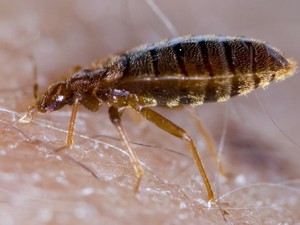 All people are not equally sensitive to bed bug bites, so while some victims break out in rashes from the bites, other people may not display symptoms. When a reaction does occur, the results of feeding can be mild (a simple red spot) to severe (rash or even hives). Bed bugs have been discovered to harbor 28 different human pathogens, but fortunately, the transmission of these diseases to people has not been demonstrated. Dark blood spots on sheets and bedding may indicate bed bug feeding. Bed bugs will sometimes excrete while they are feeding. This results in darker (reddish or brownish) spots or smears placed on bed sheets, pillowcases and mattresses, or in nearby areas. This material is composed mostly of digested blood and the stains care very characteristic.
All people are not equally sensitive to bed bug bites, so while some victims break out in rashes from the bites, other people may not display symptoms. When a reaction does occur, the results of feeding can be mild (a simple red spot) to severe (rash or even hives). Bed bugs have been discovered to harbor 28 different human pathogens, but fortunately, the transmission of these diseases to people has not been demonstrated. Dark blood spots on sheets and bedding may indicate bed bug feeding. Bed bugs will sometimes excrete while they are feeding. This results in darker (reddish or brownish) spots or smears placed on bed sheets, pillowcases and mattresses, or in nearby areas. This material is composed mostly of digested blood and the stains care very characteristic.
Posted in BED BUG DATABASE
Comments Off on Bedbug Feedings
Bed Bug Products
Bed Bug Products

GreenSense Diatomaceous Earth 5 lb bag
This fossilized skeletons of tiny aquatic organisms. When untreated, the razor sharp edges of this mined product scratch the exoskeletons of hard bodied insects, making them susceptible to fatal attack from natural organisms in the soil. Application rate: Dry: 1 lb. per 500 sq. ft. Solution: 2 tbs. per gal. of water. As a food supplement for pets: 1-2% of food volume.
Posted in BED BUG DATABASE
Comments Off on Bed Bug Products

